Today’s Current Affairs: 11th November 2025 for UPSC IAS exams, State PSC exams, SSC CGL, State SSC, RRB, Railways, Banking Exam & IBPS, etc
Table of Contents
Konark Sun Temple : Study
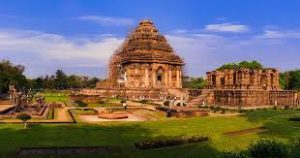
The Archaeological Survey of India (ASI) has prohibited tourists from entering the ‘Nata Mandap’ of the Konark Sun Temple in Odisha’s Puri district.
- Konark Sun Temple is located on the coastline of Odisha in the Puri district.
- Also called the Surya Devalaya, the temple is dedicated to the Hindu sun god Surya.
- Textual evidence indicates that Narasimha I (who reigned between 1238 and 1264) of the Eastern Ganga dynasty built the temple in 1250 CE.
- It was designated a UNESCO World Heritage Site in 1984.
- It is a classic example of the Odisha style of architecture, or Kalinga architecture.
- The height of the Sun Temple at Konark is estimated to be around 227 feet, making it one of the tallest temples ever built in the country.
- The temple complex has the appearance of a 100-foot-high solar chariot, with 24 wheels and pulled by six horses, all carved from stone.
- It is oriented towards the east so that the first rays of the sunrise strike the main entrance.
- The wheels of the temple are sundials, which can be used to calculate time accurately to a minute.
- Around the base of the temple, there are images of animals, foliage, warriors on horses, and other interesting structures.
- The temple also features elaborate stone carvings depicting scenes from Hindu mythology.
- The temple was constructed using three types of stones – the laterite stone for the boundary walls, flooring, and staircase; Khondalite for the structure; and Chlorite stone for the door jams and lintel.
- The use of iron strips to hold the structure together can be seen amongst the ruins of the temple.
- The temple was called Black Pagoda, attributed to its dark facade, by the Europeans who used it for navigation for their ships.
- It is said that the temple could draw ships to the shore due to its magnetic powers.
- The temple remains a site of contemporary worship for Hindus, during the annual Chandrabhaga Festival, around the month of February.
Canary Islands: In News
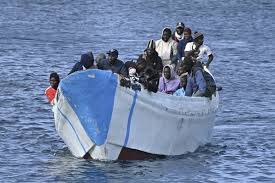
Three people were killed and 15 others injured after powerful waves struck Tenerife, the largest of Spain’s Canary Islands and a popular holiday destination.
- The Canary Islands are an archipelago located off the northwest coast of Africa in the Macaronesia region of the North Atlantic Ocean.
- Geographically, the archipelago is part of continental Africa, but politically and economically it is part of Europe.
- The archipelago is a Spanish territory and is its southernmost autonomous community.
- It is approximately 100 km from Morocco and southwest of Spain.
- It is Macaronesia’s largest and most populated archipelago.
- Some of the largest islands in the archipelago are Lanzarote, Fuerteventura, Gran Canaria, and Tenerife.
- Tenerife is the largest island of the Canary Archipelago, spanning 2,034 sq.km.
- Capital: Santa Cruz de Tenerife
- Area: 7,447 sq.km.
- The Canary Islands formed millions of years ago through volcanic eruption, and some of the volcanoes are still active.
- The highest point in Spain, Teide Peak, located on Tenerife, rises to 3,718 m.
- Climate: Desertic and tropical, moderated by trade winds and the surrounding sea.
- The islands’ location in the Atlantic Ocean and their proximity to four continents (Africa, Europe, and the Americas) make them a popular tourist destination.
United Nations Framework Convention on Climate Change:

The world has gathered at the city of Belem in the Brazilian state of Para for the 30th Conference of the Parties (COP30) to the United Nations Framework Convention on Climate Change (UNFCCC).
- UNFCCC is the principal global treaty for coordinating international responses to climate change.
- It provides the foundation for subsequent legal instruments, including the Kyoto Protocol and the landmark Paris Agreement.
- The purpose of the UNFCCC is to harness international cooperation to limit the rise of average global temperatures to minimize the impacts of climate change to enable timely adaptation, avoid threats to food production, and ensure sustainable economic development.
- It is one of three conventions that was adopted at the Rio Earth Summit in 1992 to promote a sustainable planet for future generations.
- Its sister Rio Conventions are the UN Convention on Biological Diversity and the Convention to Combat Desertification.
- The UNFCCC has 198 Parties, comprising 197 States and the European Union, making it one of the most widely ratified international treaties.
- Every year, parties to the Convention meet in Conference of the Parties (COPs), as well as in technical meetings throughout the year, to advance the aims and ambitions of the Paris Agreement and achieve progress in its implementation.
- The UNFCCC relies on the scientific assessments of the Intergovernmental Panel on Climate Change (IPCC) to inform its decisions and guide negotiations.
- The IPCC is the United Nations body for assessing the science related to climate change.
- It was established by the United Nations Environment Programme (UNEP) and the World Meteorological Organization (WMO) in 1988.
- Kyoto Protocol adopted in 1997 as part of the UNFCCC, the Kyoto Protocol outlines individual quantitative emission reduction targets for developed countries.
- The Protocol required these countries to reduce their emissions by 5% in 2008-2012 compared to 1990 levels.
Ricin:

The Gujarat Anti-Terrorist Squad recently busted a suspected terror syndicate by arresting a ‘doctor’, who was allegedly preparing the highly lethal chemical poison, ‘Ricin’, and whose handler is associated with the Islamic State Khorasan Province, and two others.
- Ricin is a poison found naturally in castor beans.
- If castor beans are chewed and swallowed, the ricin that comes out can cause injury.
- Ricin can be made from the waste material left over from processing castor beans.
- Ricin can be in the form of a powder, a mist, or a pellet.
- It can also be dissolved in water or weak acid.
- It is stable under normal conditions.
- However, it will not work if temperatures are over 80 degrees centigrade (176 degrees Fahrenheit).
- It is toxic when inhaled, ingested, or injected.As few as five to ten micrograms per kilogram can be lethal.
- Ricin works by getting inside the cells of a person’s body and preventing the cells from making the proteins they need. Without the proteins, cells die.
- Eventually this is harmful to the whole body, and death may occur.
- It is of special concern because of its potential use as a biological weapon.
- Accidental exposure to ricin is rare and results primarily from the ingestion of castor seeds.
- Treatment:
- No antidote exists for ricin.
- Symptomatic ricin poisoning is treated by providing supportive medical care to minimize the effects of the poisoning.
Financial Sector Assessment (FSA) Report:

The latest Financial Sector Assessment (FSA) report has stated that India achieving its vision to become a $30 trillion economy by 2047.
- Financial Sector Assessment (FSA) Report is published by the World Bank.
Key highlights of the Report:
- India’s financial system has become more resilient, diversified, and inclusive.
- It acknowledges that financial sector reforms helped India recover from various distress episodes of the 2010s as well as the pandemic.
- India’s ‘world class’ digital public infrastructure and government programmes have significantly improved access to a wider range of financial services for men and women.
- WB welcomed the scale-based regulation for NBFCs which recognises the different needs of this diverse industry.
- India’s capital markets(equity, government bonds and corporate bonds) have increased from 144 percent to about 175 percent of GDP since the last Financial Sector Assessment Program.
Financial Sector Assessment Program:
- It is a joint program of the International Monetary Fund (IMF) and World Bank established in 1999.
- It is a comprehensive and in-depth assessment of a country’s financial sector.
- FSAPs in advanced economies are conducted with a focus on assessing the resilience of the financial sector, the quality of the regulatory and supervisory framework, and the capacity to manage and resolve financial crises.
Angola:

The President of India is on a four-day state visit to Angola, the first by an Indian President.
- It is located on the southwestern Atlantic Coast of Africa.
- It is bordered by the Republic of the Congo (Northwest), Democratic Republic of the Congo (North & Northeast), Zambia (Southeast) and Namibia (South)
- Maritime Boundary:It shares border with Atlantic Ocean.
- Capital City: Luanda
- Geographical Features of Angola:
- Major rivers:Cuango River and Cuanza River, vital for hydropower and inland water transport.
- Water Falls: The largest is the Calandula Waterfalls (also known as the Kalandula Falls) on the Lucala River.
- Highest peak: Mount Moco, the tallest mountain in Angola.
- Climate: It has a tropical climate with a marked dry season. The climate is largely affected by the northward flow of the cold Benguela Current off the coast, and elevation.
- Natural Resources: Petroleum, diamonds, iron ore, phosphates, copper, feldspar, gold, bauxite, uranium.
Sal Tree : New Study

Scientists of the Environment Department of Himachal Pradesh University (HPU) at Shimla have revealed that the Sal tree (Shorea robusta) is the best air purifier to deal with the menace of pollution.
- It is one of the oldest and strongest trees found in India.
- It’s called the ‘Sentinel of the Forests’ because it can live for dozens of years and has the ability to withstand environmental changes.
- It is also found naturally in Uttarakhand, Terai region of Uttar Pradesh, Jharkhand, Odisha, Madhya Pradesh, Chhattisgarh and West Bengal.
- It can tolerate temperatures as high as 40-45°Celcius in summers and as low as 5°Celcius in winters.
- It can be grown in the plains, provided there is light loamy soil with good drainage and the area receives approximately 1000 mm – 3000 mm of annual rainfall.
- It requires a warm and humid climate and can thrive at altitudes up to 1500 metres above the sea level.
- This tree can live up to 100 years and doesn’t require frequent watering or care.
- It’s especially suitable for hilly areas.
- Its leaves are thick and waxy that can trap dust, carbon and fine particles in the air on their surface.
- It has a higher chlorophyll content which gives it the strength to withstand harmful gases such as carbon monoxide and sulphur dioxide present in vehicle exhaust.
- It also has a very dense canopy that acts as a natural filter while trapping pollutants in the air.
Exercise Malabar-2025:

Indian Naval Ship (INS) Sahyadri is at Guam in the Northern Pacific for participation in the multilateral Exercise Malabar-2025.
- It was started in 1992 as a bilateral naval exercise between India and US navy.
- The first Malabar Exercise in the Bay of Bengal took place in 2007.
- It was expanded into a trilateral format with the inclusion of Japan in 2015.
- In 2020, the Australian Navy joined the Malabar Exercise, making it a quadrilateral naval exercise.
- It takes place annually in the Indian Ocean and Pacific Oceans alternatively.
- It has evolved into a key multilateral event aimed at enhancing interoperability, fostering mutual understanding, and addressing shared maritime challenges in the Indian Ocean and Indo-Pacific region.
- Exercise Malabar-2025 involves two phases
- Harbour Phase: It will feature operational planning and discussions, alignment on communication protocols, familiarisation visits between participating nations, and sports fixtures.
- Sea Phase: Following the harbour phase, all participating units will proceed in this phase, wherein ships and aircraft will take part in naval drills, focusing on joint fleet operations, anti-submarine warfare, gunnery serials and flying operations.
Information Technology(IT) Amendment Rules, 2025:

The Ministry of Electronics and Information Technology (MeitY) has issued the Information Technology (Intermediary Guidelines and Digital Media Ethics Code) Amendment Rules, 2025, updating the Information Technology (Intermediary Guidelines and Digital Media Ethics Code) Rules, 2021, particularly Rule 3(1)(d).
- These 2025 rules effective from 15th November 2025, aim to tighten procedural safeguards around the removal of unlawful online content.
Rule 3(1)(d) of the IT Rules, 2021 requires internet intermediaries to remove or disable access to unlawful content upon receiving a government order or notification. - This process operates alongside Section 79(3)(b) of the IT Act, 2000, which removes safe-harbour protection if intermediaries fail to take action after receiving “actual knowledge,” and Section 69A which empowers the Central Government to block public access to online information if necessary for national security, sovereignty, or public order.
Key Features of IT Amendment Rules, 2025:
- It introduces new safeguards under Rule 3(1)(d) of the IT Rules, 2021 to ensure transparency, accountability, and fairness in the process and more precise, actionable notices for content takedowns.
- Only senior officials can issue takedown directions (an officer of at least Joint Secretary rank (or equivalent/Director if JS is not appointed)), and for police, only a specially authorised Deputy Inspector General of Police (DIG)-level officer.
- Takedown orders must clearly mention the legal basis, the nature of the violation, and the exact link/identifier of the content.
- This replaces vague notices and aligns with Section 79(3)(b) of the IT Act.
- All takedown directions will be reviewed every month by a Secretary-level officer to ensure they remain necessary, proportionate, and lawful.
National Urban Conclave 2025:
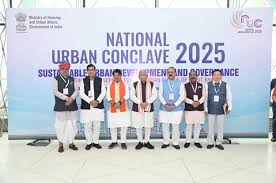
The National Urban Conclave 2025 concluded in New Delhi, advancing the Viksit Bharat 2047 vision through the launch of major initiatives. It gathered key stakeholders to deliberate on the theme “Sustainable Urban Development and Governance.”
Major Initiatives Launched at National Urban Conclave 2025:
- Dumpsite Remediation Accelerator Programme (DRAP): A year-long mission to accelerate dumpsite cleanup, reclaim urban land, and achieve “Lakshya Zero Dumpsites” by September 2026.
- DRAP will prioritize these high-impact locations, covering approximately 8.8 crore MT of legacy waste.
- To support this, the Centre provides Rs 550/tonne financial support for legacy waste remediation.
- Swachh Bharat Mission – Knowledge Management Unit (KMU): The unit is established by the Ministry of Housing and Urban Affairs (MoHUA) at the National Institute of Urban Affairs (NIUA).
- The KMU will support Swachh Bharat Mission–Urban through capacity building, knowledge creation, and institutional learning.
- Centre for Public Policy on Habitat and Housing: It will be set up at NIUA to support affordable urban housing through policy work, capacity building, data strengthening, and knowledge sharing.
- IIRS Sankalan App: It is a Geographical Information System (GIS) -based mobile application launched by the Indian Institute of Remote Sensing (IIRS) to make urban surveys faster and more efficient.
- Urban Invest Window (UiWIN): A Housing and Urban Development Corporation Limited (HUDCO)-led platform to attract private and multilateral financing (e.g., World Bank, ADB) and promote PPP projects, supporting sustainable urban infrastructure.
- Hill & Himalayan Cities Fund: A Rs 1,000 crore fund under Swachh Bharat Mission–Urban 2.0 has been announced to strengthen solid waste management in hill and Himalayan cities and address the unique environmental challenges faced by these fragile landscapes.
- It seeks to improve waste collection, processing, and disposal systems while promoting cleaner, sustainable urban development.
NALSAR University of Law report on fair trials:
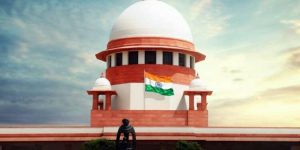
Supreme Court Justice Vikram Nath expressed deep concern that over 70% of India’s prison population are undertrials, most of whom remain unaware of their right to free legal aid, as revealed in a NALSAR University of Law report on fair trial practices.
- The Fair Trial Programme (FTP), launched in 2019 by NALSAR University of Law, Hyderabad, through its Square Circle Clinic, provides legal representation and advocacy support to undertrials in Indian prisons—especially from disadvantaged backgrounds.
- 41.3% of undertrials had no lawyer assigned, and over 51% lacked necessary case documents.
- Nearly 68% of undertrials belonged to marginalised caste groups, and 80% worked in the unorganised sector.
- 58% of accused persons had at least one disability, showing intersectional disadvantage.
- Only 7.91% accessed legal aid, despite constitutional and statutory guarantees.
- The programme filed 1,834 bail pleas, secured 1,388 releases, and disposed of 777 cases, underscoring the importance of systematic legal intervention.
COP30 – UN Climate Summit 2025:
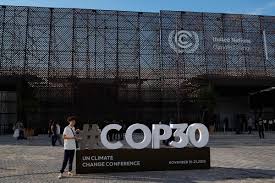
The 30th Conference of the Parties (COP30) to the UNFCCC began in Belém, Brazil, marking the decade since the Paris Agreement and focusing on translating global climate commitments into concrete implementation.
- COP30 is the annual UN Climate Conference under the UN Framework Convention on Climate Change (UNFCCC), where nations assess progress on the Paris Agreement, strengthen emission targets, and negotiate finance and adaptation frameworks.
- Host: Hosted by Brazil in the Amazonian city of Belém.
- Aim is to make COP30 an “Implementation COP” that turns pledges into measurable outcomes, ensuring fair, inclusive, and equitable climate transitions aligned with the principles of Common but Differentiated Responsibilities and Respective Capabilities (CBDR-RC).
- First major review since the Paris Agreement to assess global progress and identify gaps in mitigation and adaptation.
- New Collective Quantified Goal (NCQG) to scale climate finance from $100 billion to $300 billion annually by 2035, with a roadmap to mobilise $1.3 trillion per year from all actors.
- Global Goal on Adaptation (GGA) establishing quantifiable, measurable targets and funding for climate resilience.
- Baku-to-Belém Climate Finance Roadmap framework to operationalise predictable finance for developing nations.
- Tropical Forests Forever Facility (TFFF) Brazil-led blended-finance fund to reward nations conserving tropical forests.
- Integration of Climate and Biodiversity Agendas linking carbon reduction with forest, ocean, and soil restoration.
Janjatiya Gaurav Varsh 2025:
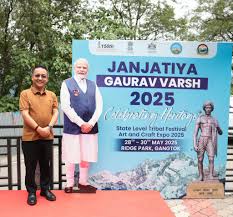
Nationwide celebrations under Janjatiya Gaurav Varsh 2025 are underway to mark the 150th birth anniversary of Bhagwan Birsa Munda and 150 years of “Vande Mataram”.
- Janjatiya Gaurav Varsh 2025 is a nationwide year-long celebration dedicated to honouring the legacy of tribal freedom fighters—especially Bhagwan Birsa Munda, known as Dharti Aaba—and commemorating 150 years of the national song “Vande Mataram.”
- It seeks to promote awareness of India’s tribal contributions to nation-building and cultural identity.
- Organisations Involved: Ministry of Tribal Affairs (MoTA) is the nodal agency.
- Supported by Tribal Research Institutes (TRIs), State Governments, Eklavya Model Residential Schools (EMRS), and cultural bodies.
- Aim is to celebrate India’s tribal heritage, resilience, and patriotism while deepening national pride and fostering cultural inclusivity in line with the vision of Sabka Saath, Sabka Vikas, Sabka Vishwas, Sabka Prayas.
Odd Radio Circles (ORCs):
Citizen scientists from India’s RAD@home astronomy group, led by Prof. Ananda Hota of the University of Mumbai, have discovered a rare twin “Odd Radio Circle” (double ORC) using LOFAR telescope data only the second such known instance globally. Odd Radio Circles (ORCs) are mysterious, circular astronomical structures visible only in radio wavelengths. They are vast rings of radio emission surrounding distant galaxies, thought to arise from powerful shockwaves caused by extreme galactic events such as black hole mergers or massive energy outflows. First identified in 2019 through data from the Australian Square Kilometre Array Pathfinder (ASKAP) telescope, and later studied using international facilities such as LOFAR and India’s Giant Metrewave Radio Telescope (GMRT).
Red Fort Blast 2025:
Delhi was shaken on November 10, 2025, after a deadly bomb blast in the heart of Old Delhi, near Red Fort Metro Station. The Delhi Red Fort Blast left at least eight people dead and more than 20 injured. Police, NIA, and emergency teams raced to the site, sealing off the area as panic swept through popular locations like Chandni Chowk and Lal Qila. Hospitals including LNJP went on high alert, bracing for rushes of victims and their distraught families. Security across New Delhi and Mumbai is tight, with heavy patrols and live news coverage bringing the nation’s focus sharply to the capital. The story hit news headlines within minutes as eyewitnesses reported seeing flames and smoke billowing from a car outside Lal Qila Metro. Authorities are working through the night to identify the root cause, with IED and terror links under investigation. All of Delhi is watching, anxious for updates and answers today.
Centre Notifies New Deep-Sea Fishing Rules for EEZ:
The Government of India has notified new deep-sea fishing rules for operations within its Exclusive Economic Zone (EEZ), covering over 23 lakh square kilometres of marine territory. Announced on November 4, 2025, these rules aim to unlock high-value marine resources—particularly tuna—while empowering local fishers, cooperatives, and safeguarding marine biodiversity. The reforms implement promises made in the Union Budget 2025–26 and signal a strategic push to make India a leader in sustainable and tech-enabled marine exports
India Enters Global Forest Fund:
At the COP30 Leaders’ Summit in Belém, Brazil, India officially joined the Tropical Forests Forever Facility (TFFF) as an observer, marking a strategic move in international climate diplomacy. This comes as the world observes a decade since the Paris Agreement (2015) and questions grow over the adequacy of global climate ambition.The Tropical Forests Forever Facility, launched by Brazil, is a global forest finance initiative aiming to mobilise $125 billion through public and private funding. Its goal is to reward countries that conserve or expand their tropical forests by providing results-based payments—a shift from promises to performance-driven support.
Pakistan’s 27th Amendment:
Pakistan’s democracy is under serious strain as the government pushes forward the controversial 27th Constitutional Amendment, which could permanently alter the country’s civil-military power balance. Introduced in the Senate on November 8, 2025, the bill proposes sweeping changes to the judiciary, provinces’ fiscal powers, and military leadership structure—widely seen as a move to centralize authority in the hands of the army chief, General Asim Munir. This amendment has been criticized for institutionalizing military control and weakening civilian oversight, potentially turning Pakistan into a military-dominated state under a constitutional façade.
Mumbai Tops Asia’s Happiest Cities in 2025:
Time Out surveyed over 18,000 residents across Asia to rank the happiest cities. Surprisingly, Mumbai, India’s bustling financial and entertainment hub, emerged as the top-ranking city. The survey evaluated culture, food, nightlife, and overall quality of life. Despite its reputation for crowded streets and busy lifestyle, Mumbai’s unique charm has brought it to the forefront as Asia’s happiest city.
India’s Forex Reserves Drop by $5.6 Billion in October:
India’s foreign exchange reserves saw a sharp fall of $5.6 billion, settling at $689.73 billion as of October 31, 2025, according to the latest data released by the Reserve Bank of India (RBI). This marks the second consecutive weekly decline, raising questions over global market pressures, currency movements, and gold price corrections.These fell by $1.9 billion, dropping to $564.59 billion. FCAs are the largest component of the forex reserves and reflect holdings in foreign currencies like the euro, pound, yen, and others. These values also include the impact of their exchange rate fluctuations against the US dollar.




